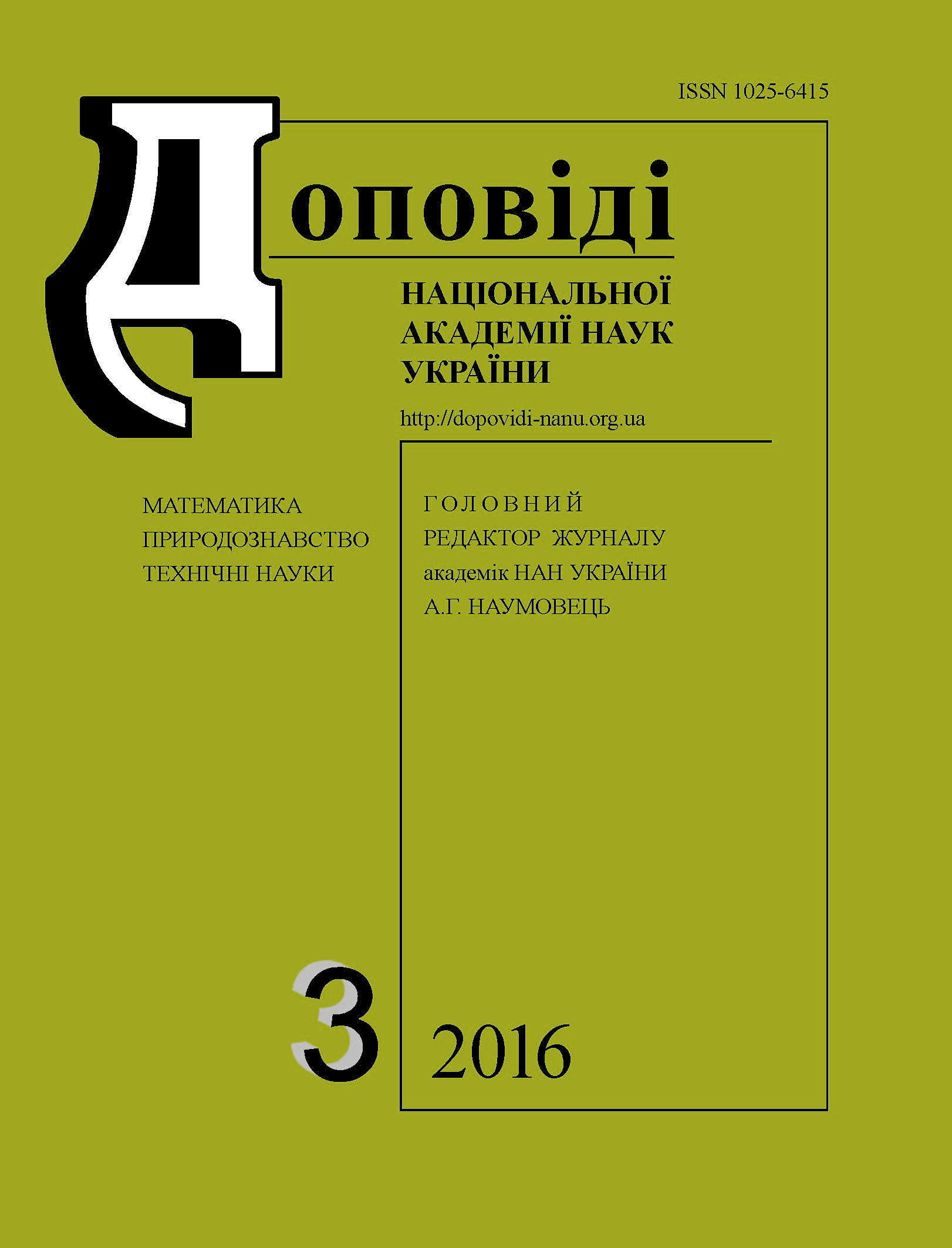Protection of groundwater against pollution by uranium compounds using permeable reactive barriers
DOI:
https://doi.org/10.15407/dopovidi2016.03.113Keywords:
groundwater, microbiological reduction, permeable reactive barrier, uranium, zero valent ironAbstract
Hydrogeologic and geochemical conditions in a vicinity of the large uranium mine tailings storage facility (TSF) in the Zhovti Vody town are characterized to provide the data to locate, design, and install a permeable reactive barrier to treat groundwater contaminated by leachate infiltrating from the TSF. The effectiveness of three different permeable reactive materials are investigated: zero-valent iron, phosphate material, and sulphate-reducing bacteria. In the pilot permeable reactive barrier (PRB) installation, separate rows of cylinders were filled with each of the three permeable reactive materials, and the sampling was conducted within and around the rows of reactive cylinders. The PRB was installed in October–November 2011. Key sampling parameters included field parameters, inorganic analytes, and contaminants of concern (radionuclides and heavy metals). Groundwater levels were measured throughout the study. The results of studies demonstrate the effectiveness of zero-valent iron for remediating uranium-contaminated groundwater, when utilized in a PRB.
Downloads
References
Extraction and processing of uranium ores in Ukraine, Ed. by A.P. Chernov, Kyiv: ADEF Ukraine, 2001 (in Russian).
Landa E. R. J. Environ. Radioact., 2004, No 77: 1–27. https://doi.org/10.1016/j.jenvrad.2004.01.030
Kornilovych B.Yu., Sorokin O. G., Pavlenko V. M., Koshyk Yu. Y. Environmental protection technology in uranium mining and processing industry, Kyiv, 2011 (in Ukrainian).
Blowes D. W., Ptacek C. J., Benner S. G. et al. J. Contam. Hydrol., 2000, 45: 123–137. https://doi.org/10.1016/S0169-7722(00)00122-4
Interstate Technology & Regulatory Council. Permeable Reactive Barriers: Technology Update. PRB-5, Washington, D. C., 2011.
Weber A., Ruhl A. S., Amos R. T. J. Contam. Hydrol., 2013, 151: 68–82. https://doi.org/10.1016/j.jconhyd.2013.05.001
Merroun M. L., Selenska-Pobell S. J. Contam. Hydrol., 2008, 102: 285–295. https://doi.org/10.1016/j.jconhyd.2008.09.019
Kovalchuk I. A., Khlopas O. O., Kornilovych B.Yu., Gvozdyak P. I., Makovets'kyi O. L. Dopov. Nac. akad. nauk Ukr., 2011, No 10: 175–180 (in Ukrainian).
Kornilovich B., Wireman M., Caruso B., Koshik Y., Pavlenko V., Tobilko V. Centr. Europ. J. Occup. and Environ. Med., 2009, 15, No 1–2: 73–85.
Wireman M., Kornilovich B. Newsletter: International Association of Hydrogeologists. U. S. National Chapter, 2012, 41, No 2: 12–14.
Nabyvanets B. Y., Osadchyi V. I., Osadcha N. M., Nabyvanets Yu. B. Analatical chemistry of surface waters, Kyiv: Nauk. Dumka, 2007 (in Ukrainian).
Cundy A. B., Hopkinson L., Whitby R. L. D. Sci. Total Environ., 2008, 400: 42–51. https://doi.org/10.1016/j.scitotenv.2008.07.002
Morrison S. J., Mushovic P. S., Niesen P. L. Environ. Sci. Technol., 2006, 40: 2018–2024. https://doi.org/10.1021/es052128s
Lloyd J. R., Lovley D. R. Curr. Opin. Biotechnol., 2001, 12: 248–253. https://doi.org/10.1016/S0958-1669(00)00207-X
Zhengji Y. J. Environ. Radioact., 2010, 101: 700–705. https://doi.org/10.1016/j.jenvrad.2010.04.009
Downloads
Published
How to Cite
Issue
Section
License
Copyright (c) 2024 Reports of the National Academy of Sciences of Ukraine

This work is licensed under a Creative Commons Attribution-NonCommercial 4.0 International License.



